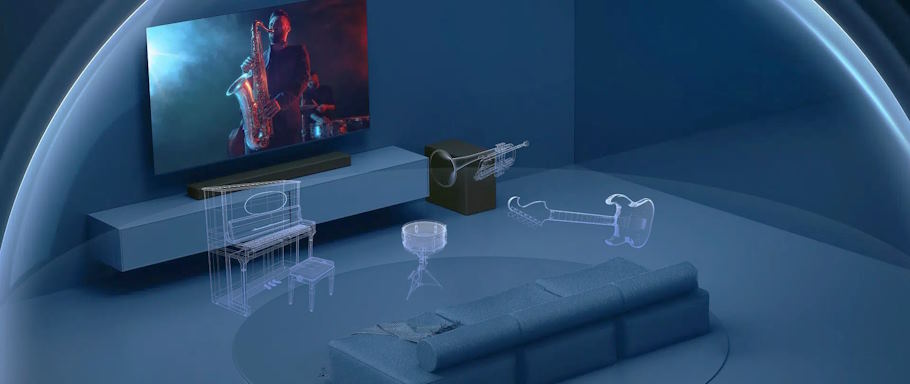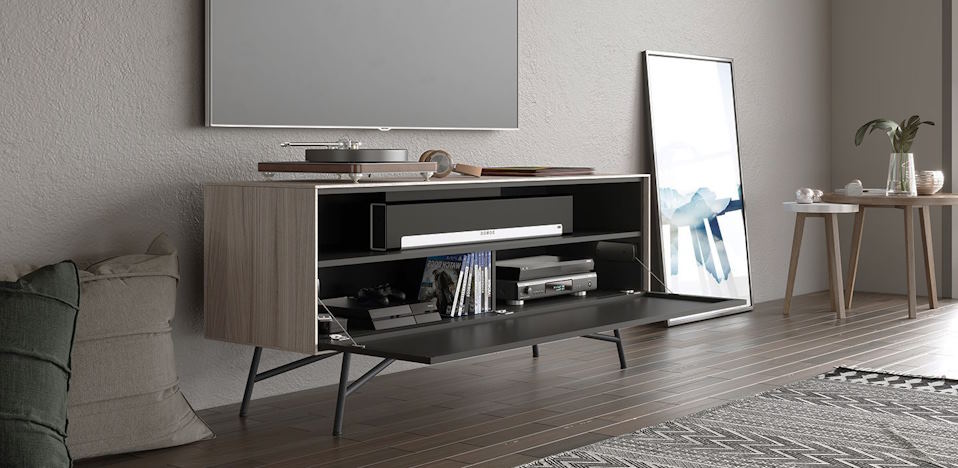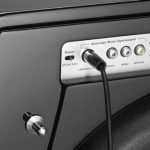As technology continues to advance, the sheer variety of soundbars available on the market can be overwhelming. With different features, connectivity options, and form factors, the process of setting up a soundbar might seem like a daunting task.
Choosing the Right Placement
Now that you’re acquainted with your soundbar, let’s move on to one of the most crucial aspects of optimal performance – placement. The position of your soundbar for voice clarity in relation to your TV and the acoustics of the room can significantly affect the audio experience.
For the best results, place your soundbar in the center, directly beneath your TV. This helps create a balanced soundstage, ensuring that the audio complements the on-screen action. If wall-mounting is your preference, make sure the soundbar is aligned at ear level when seated. Alternatively, if you choose to place it on furniture, ensure there’s no obstruction between the soundbar and your listening position.
Consider the acoustics of the room as well. Avoid placing the soundbar in corners or against reflective surfaces, as this can lead to audio distortion. Experiment with different positions to find the sweet spot that enhances sound clarity and immersiveness.

Connecting Your Soundbar
With placement sorted, the next step is connecting your soundbar to your TV and other devices. Soundbars offer various connectivity options, including HDMI, optical, and Bluetooth. The choice of connection depends on your devices and the available ports.
HDMI is a popular choice for its ability to transmit both audio and video signals in high quality. Connect one end of the HDMI cable to the HDMI ARC (Audio Return Channel) port on your TV and the other to the HDMI ARC port on your soundbar. This single connection simplifies setup and allows your TV remote to control the soundbar.
If HDMI is not an option, optical cables provide a reliable alternative for transmitting audio. Connect one end to the optical output on your TV and the other to the corresponding input on your soundbar. Bluetooth connectivity is ideal for wirelessly streaming audio from compatible devices like smartphones and tablets.
In case of any issues with connectivity, check cables for damage and ensure they are securely plugged in. Refer to your soundbar and TV manuals for specific instructions on connection options.
Adjusting Audio Settings
Once your soundbar is connected, it’s time to delve into audio settings. Most soundbars come with pre-set sound modes and equalizer settings designed to enhance different types of content. Experiment with these presets to find the one that suits your preferences.
If your soundbar features customizable equalizer settings, take advantage of them to fine-tune the audio to your liking. Adjust bass, treble, and other parameters based on the type of content you are enjoying. Keep in mind that what sounds good for movies might not be optimal for music, so be prepared to make adjustments accordingly.
Many soundbars also come with built-in calibration tools that analyze your room’s acoustics and adjust the audio settings accordingly. Follow the on-screen instructions or refer to the manual to initiate this process for a tailored audio experience.

Syncing with Subwoofers and Surround Speakers
For those seeking a more immersive audio experience, syncing your soundbar with a subwoofer and surround speakers is the next step. Subwoofers add depth to low-frequency sounds, while surround speakers create a more enveloping audio environment.
If your soundbar comes with a separate subwoofer, follow the manufacturer’s instructions for pairing it with the soundbar. Place the subwoofer in an optimal location, usually near the soundbar, to ensure balanced bass distribution.
Some soundbars also support additional surround speakers for a true surround sound experience. Connect these speakers according to the provided instructions, ensuring they are strategically placed for maximum effect. Experiment with speaker placement to find the configuration that delivers the best surround sound experience.
If you encounter any syncing issues, consult the manuals for both the soundbar and the additional speakers. Ensure that all devices are properly connected, and if necessary, repeat the pairing process.


















